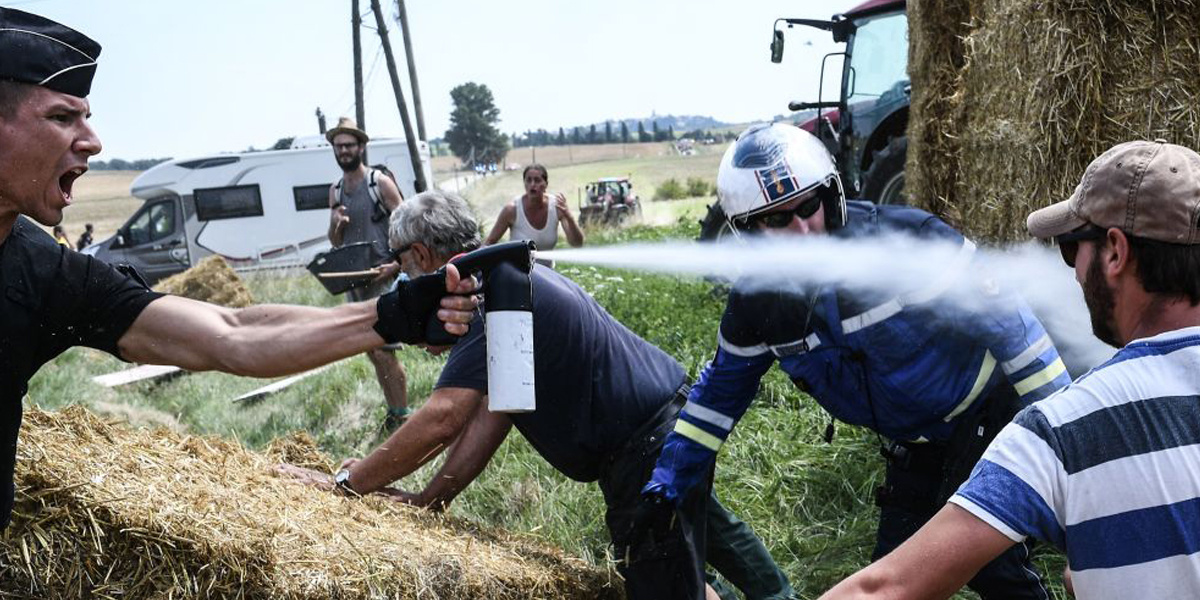

By Dan Nosowitz
According to the little explanation in English media we have, the farmers were protesting “to reduce farm subsidies and leave more latitude to member states under the bloc’s Common Agriculture Policy (CAP).” The protests are likely tied to an announcement in May that the European Commission proposed to reduce farmer subsidies in its member states, a proposal that was swiftly met with condemnation from the French government.
What Exactly Does That Mean?
The proposal is a reaction to Brexit, in which the UK’s exit from the European Union will result in an estimated reduction in the EU coffers of about $14 billion U.S. dollars. With that reduction, the EU has to change the way it allocates money, and one of the places the EU plans to change things is the Common Agriculture Policy, or CAP, which handles agriculture subsidies and rural development, sort of like the non-nutrition parts of the American USDA.
The cut in the CAP budget would be about five percent, which might not seem like a lot, but France, with its “politically influential but economically struggling” agriculture sector (description according to The Local France), would be hit harder than any other country. The FNSEA, France’s biggest agricultural union, wrote back in May, “Such a budget is unacceptable: it won’t allow agriculture to meet the new challenges it faces, particularly price volatility and climate change.” In specific terms, the proposal suggests a cap on the number of subsidies that can go to farmers, based on farm size, with the maximum subsidy set at 60,000 Euros.
Direct aid, such as subsidies, is a fundamental part of what allows farmers in France—and in the U.S. too—to survive.
The protesters heaved hay bales and drove tractors into the course while holding signs and yelling to bring attention to the issue. The protesters were sprayed with tear gas and forcibly arrested, while riders who had tear gas spray drift their way were medically treated.
Also, the Tour de France riders were fine.

 233k
233k  41k
41k  Subscribe
Subscribe 